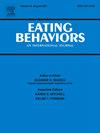Do premorbid weight parameters predict BMI 30 years after adolescent-onset anorexia nervosa?
IF 2.6
3区 医学
Q2 PSYCHIATRY
引用次数: 0
Abstract
Purpose
To examine anthropometric predictors of BMI 30 years after the onset of adolescent AN.
Methods
A group of 51 individuals with adolescent-onset AN were identified in Sweden in 1985. Anthropometric data have been collected from birth records and school nurse charts. A group matched for gender, school and age constituted a healthy control group. Possible predictors of BMI 30 years after AN onset including ponderal index (a variable that estimates body proportionality and composition during the infancy period) and highest BMI Z score (highest BMI in childhood, adjusted for age and sex) were analyzed with linear regression and multivariate analysis.
Results
None of the five possible predictors were significantly correlated to BMI outcome 30 years after AN onset. In the control group, BMI at the 18- and 30-year follow-ups were statistically significantly predicted by ponderal index at birth (18-year follow-up: r = 0.36, p = .015; 30-year follow-up: r = 0.32, p = .034).
Conclusions
We found no statistically significant premorbid anthropometric predictors of BMI 30 years after the onset of AN. Ponderal index at birth appears to normally predict BMI outcomes in the general adult population. Having had AN during adolescence may have caused a disruption of the expected long-term BMI trajectory, resulting in a lower weight status than expected. These findings may be implemented in clinical practice to address patients' fear of exponential weight gain after recovery.
病前体重参数能否预测青少年厌食症 30 年后的体重指数?
目的研究青少年自闭症发病30年后BMI的人体测量预测因素。方法1985年在瑞典发现了51名青少年自闭症患者。人体测量数据来自出生记录和学校护士的病历。一组在性别、学校和年龄方面相匹配的人构成健康对照组。通过线性回归和多变量分析,对 AN 发病 30 年后 BMI 的可能预测因素进行了分析,其中包括思索指数(估计婴儿期身体比例和组成的变量)和最高 BMI Z 分数(儿童期最高 BMI,根据年龄和性别进行调整)。在对照组中,18 年和 30 年随访的 BMI 与出生时的深思指数有明显的统计学预测关系(18 年随访:r = 0.36,p = .015;30 年随访:r = 0.32,p = .034)。出生时的胰岛素指数似乎可以正常预测一般成人的体重指数结果。青少年时期患上AN可能会破坏预期的长期BMI轨迹,导致体重状况低于预期。这些发现可用于临床实践,以解决患者对康复后体重呈指数增长的恐惧。
本文章由计算机程序翻译,如有差异,请以英文原文为准。
求助全文
约1分钟内获得全文
求助全文
来源期刊

Eating behaviors
Multiple-
CiteScore
4.20
自引率
3.60%
发文量
65
审稿时长
60 days
期刊介绍:
Eating Behaviors is an international peer-reviewed scientific journal publishing human research on the etiology, prevention, and treatment of obesity, binge eating, and eating disorders in adults and children. Studies related to the promotion of healthy eating patterns to treat or prevent medical conditions (e.g., hypertension, diabetes mellitus, cancer) are also acceptable. Two types of manuscripts are encouraged: (1) Descriptive studies establishing functional relationships between eating behaviors and social, cognitive, environmental, attitudinal, emotional or biochemical factors; (2) Clinical outcome research evaluating the efficacy of prevention or treatment protocols.
 求助内容:
求助内容: 应助结果提醒方式:
应助结果提醒方式:


